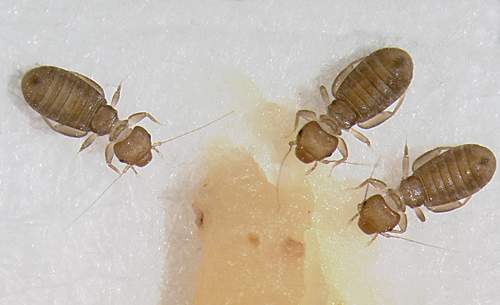Psocids (pronounced sosids) are a group of tiny pale insects often referred to as booklice.
There are over 3,000 species of book lice to be found across the world, although less than 50 are associated with human activities.
They are not related to the true lice and do not bite or harm humans.
However, they do damage books and other paper products including paper packaging.
They do not feed directly on the paper but on microscopic fungi, algae, lichen, and organic detritus that grows on the paper where the humidity levels permits.
Paper packaging in warehouses is particularly susceptible to book lice infestation as the atmosphere in warehouses and therefore the packaging is difficult to control and keep very dry.
Products such as flour can be rendered un-saleable by an infestation of book lice.
The tiny book lice can penetrate the packaging and contaminate the product within.
Book lice lay their eggs in minute crevices or on foliage.
The young are born as miniature, wingless versions of the adult.
Book lice nymphs typically molt six times before reaching full adulthood.
The total lifespan of book lice is rarely more than a few months.
The treatment and prevention of these pests relies first on an accurate identification of the pest species and an understanding of the stored products infested.
Only then can an effective strategy be tailored to the elimination of the source of the infestation, the prevention of the insects entering the affected areas and the destruction or removal of any insects present.
If you find that you have book lice infestation please call PestFree on 1800 15 30 10 or head to our website https://pestfreesydney.com.au/ to arrange a time for one of our trusty technicians to come out and treat the area that the book lice are invading.
